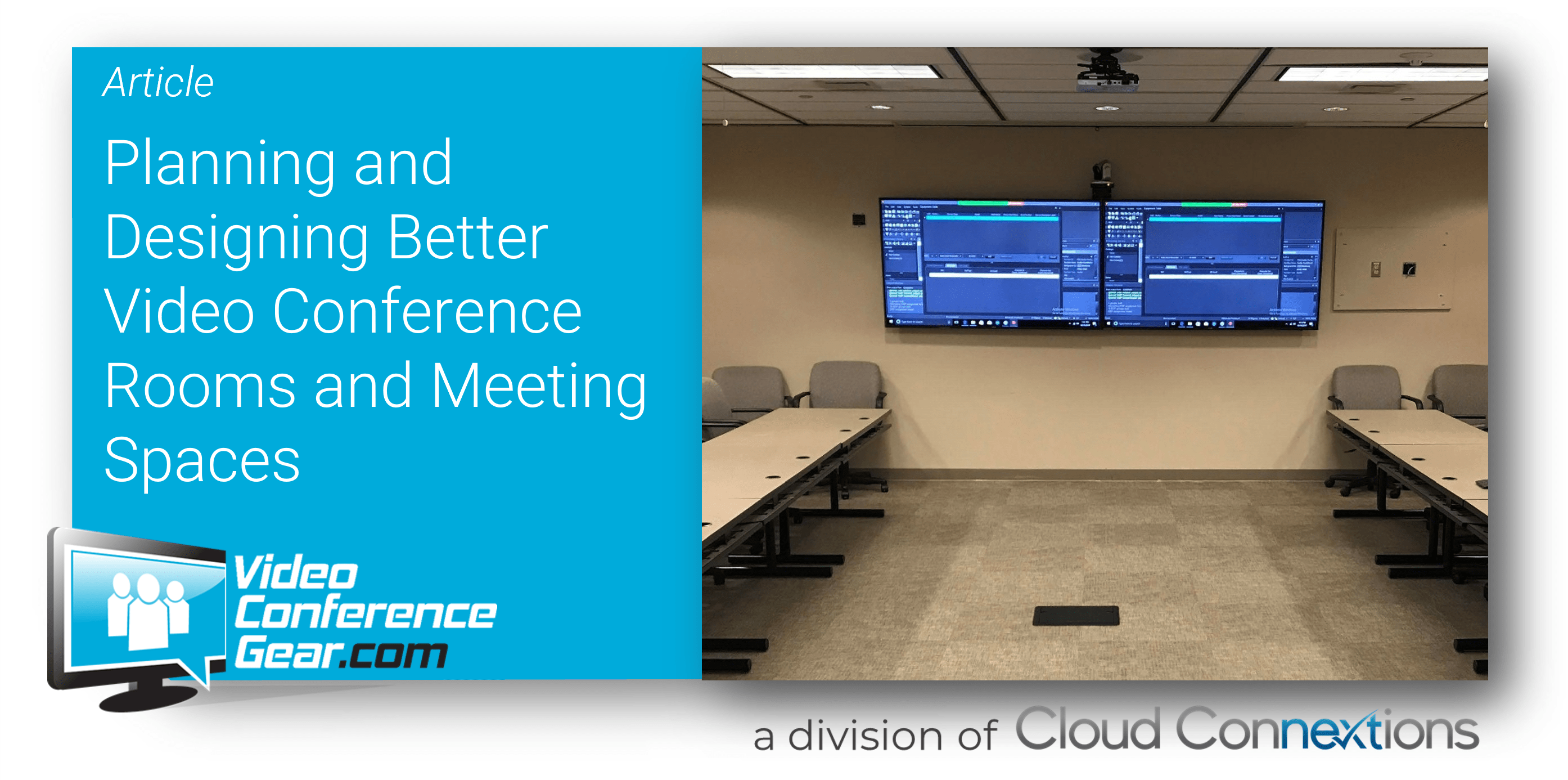Planning and Designing Better Video Conference Rooms and Meeting Spaces
Posted by Designs from Cloud Connextions on 2/28/2023

Video conferencing is the leading way to connect with clients, colleagues, and partners all over the world. Yet when you're meeting in a room that isn't designed for it, you can lose out on efficiency and productivity. Here are some tips for setting up your meeting space, so you can get the most out of your video sessions:
Make sure everyone has a camera—and that they know how to use it. It's important to have at least one camera pointed at each person in your video call, so they can be seen by others on the call. If you're using a teleconference service like Zoom or Skype, make sure everyone has downloaded their app and logged in before starting the call.
Set up lighting, so everyone can see each other well enough not to squint or look away from the camera too much while talking. Position tables so that people aren't sitting in shadow or glare from nearby windows; this will help them feel more comfortable during meetings, as well as allow them to focus more easily on what others are saying rather than how someone looks "on camera".
Some other things to consider when implementing video conferencing into your meeting spaces:
Color Palate
Certain colors are conducive to office spaces, work environments, and are aesthetically pleasing while others can create subconscious tension, loss of focus, headaches, and fatigue. It is important to choose tints (color plus white) shades (color plus black), or muted, neutral colors such as tan, beige, gray, or slate blue. These reduce eye strain in-person and when looking at the color through a video image. Stark whites and dark palettes can create a “floating head” visual, and bright colors add too much vibration between the silhouette of the person and the walls.
Wall Finishes
Walls with matte finishes are best for all office spaces, as they offer a calming atmosphere by reducing glares and having a soft look. Avoid using paint with a satin or enamel finish. Using wallpaper or fabric is also a viable alternative, but make sure to avoid patterns with intricate or small patters as it causes a distorted “flicker” in the video image.
Windows
Having a conference room without windows is rare, but sunlight can impede the camera’s ability to get a quality image and make viewing difficult. Using blinds or curtains to block out the natural light can greatly improve the quality of lighting within the room. Abstain from curtains and window treatments with patterns or a silky finish, and choose options with muted, pale tones.
Furnishings
While it is unavoidable to have furniture in a conference room, decor and extra furniture should be kept to a minimum. As with wall finishes above, avoid wall hangings that have reflective finishes or surfaces. When selecting furniture for your video conference room, consider multi-functioning pieces such as a credenza for storage, counter space, and a small refrigerator. When choosing a room set-up, consider whether the space will be used for trainings. The way tables and chairs are arranged is important for these purposes.
Room Lighting
The goal with lighting is to provide an evenly lit conference room with minimal shadows. Direct lighting should be avoided as that can cause over/under exposure and shadows. Aim for vertical illumination of subjects - this reduces facial shadows that commonly result from above lighting. Having multiple light sources in front of subjects will create attractive facial lighting. Diffused fluorescent lights are suggested, as well as indirect candescent lights, which enable a dimming effect. Having different fixtures (recessed, wall, hanging, etc.) can help create a three-dimensionality to faces. Backlighting is also something to consider, as this helps bring the subjects away from the wall or background.
Audio Equipment
Microphones for video and audio conferencing are designed to be sensitive, and most pick up sound within eight feet. Echo and reverberation can cause distorted audio signals. To get the best audio quality, invest in sound absorbing materials such as carpet, fabric wall coverings, drapes, fabric covered blinds, and ceilings with sound-proofing tiles.
Visual Displays and In-Room Monitors
Two common methods of displaying information are using a flat screen or a projector. While using either of these, there are several things to consider. Overhead lighting or glare from windows can reduce the quality of the projected image. If you are installing a projector in a bright room, make sure your projector is a model with high lumens and quiet fan. The alternative to the projector is using either an LCD or plasma screen. These both work well in varied lighting conditions and provide clarity that is not available with projectors, however 52” is the smallest size you should consider.
Having more than one monitor is helpful in video conferencing as they allow the host to put an agenda, photos, and other content being shared on the 2nd monitor. Dual monitors are also helpful because it can give a better one-on-one feeling to the conference and even put a full-screen emphasis on the main speaker.
We have years of experience designing meeting spaces for video conference and even just "vanilla" voice conferencing. We know how to look at blueprints, cabling diagrams, power requirements and may areas for the proverbial "gotchas" when it's time to install and setup the rooms.
Whether it's desk sharing, phone booths, huddles rooms, open spaces, conference rooms, classrooms or boardrooms, we have designed it to work for our clients - matching their expectations and goals to the final design. Let us help you do the same. We are just phone call, video call or chat away.
If you're ready to see get going with your redesigned rooms, contact our design experts on Cloud Connextions.
